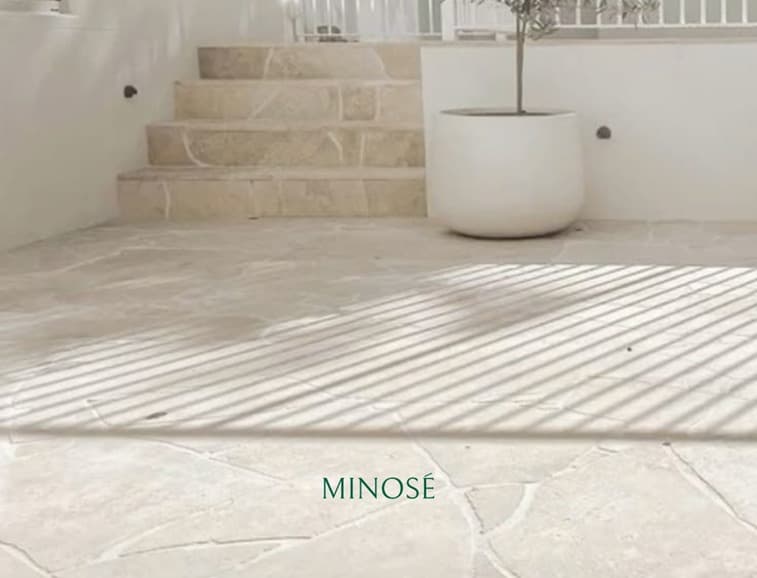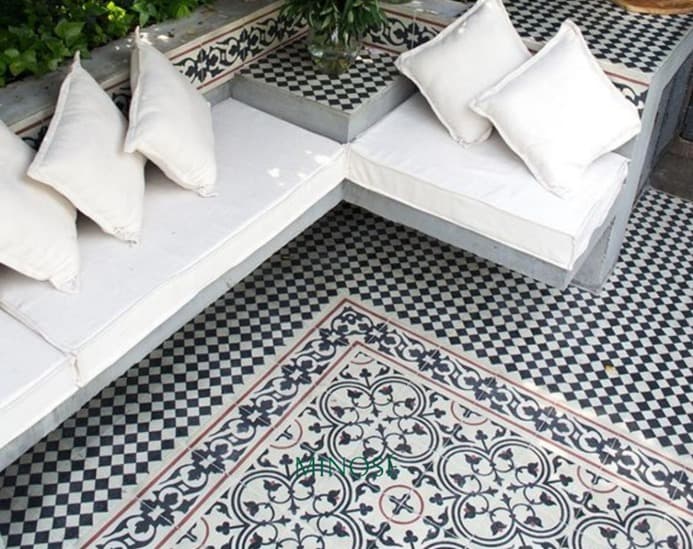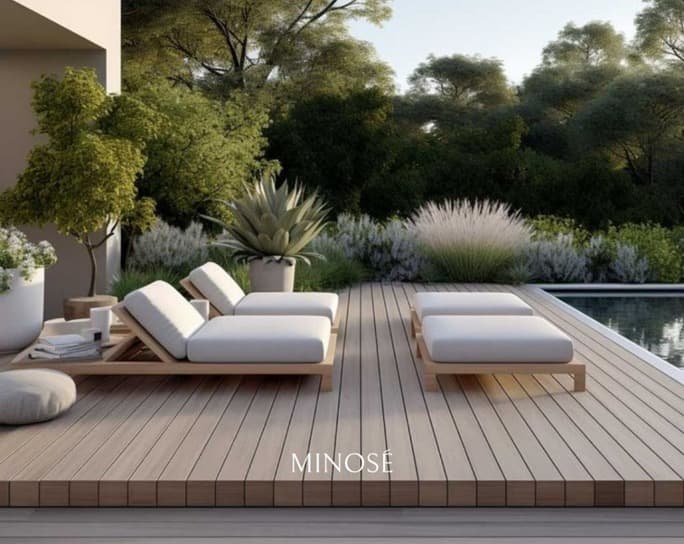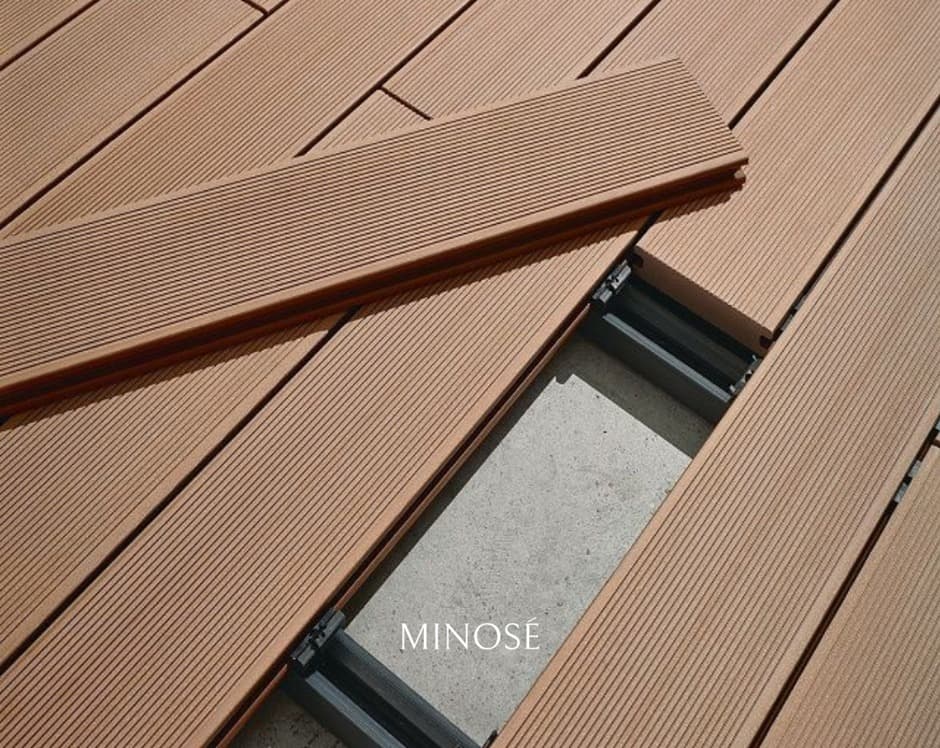Your outdoor spaces say as much about your home as the interiors do maybe even more. There's something special about stepping onto a beautifully designed terrace on a Sunday morning with coffee in hand.
Your outdoor spaces say as much about your home as the interiors do maybe even more. There's something special about stepping onto a beautifully designed terrace on a Sunday morning with coffee in hand, or hosting friends for dinner under the stars on a deck that just feels right. These moments don't happen by accident they're built on foundations that work hard while looking effortless.
Choosing outdoor flooring means thinking about what you'll actually live with every day. Will it hold up through monsoon season? Can you walk barefoot on it during summer without scorching your feet? Does it still look good five years from now, or will it be the project you regret? The best choices balance that sweet spot between timeless beauty and real-world durability materials that age gracefully rather than just getting old.
Let's walk through four outstanding options that bring both character and performance to outdoor living spaces. Each one tells a different story, matches different lifestyles, and creates unique experiences underfoot.
Natural Stone Flooring
There's honestly nothing quite like the feel of natural stone beneath your feet. Granite, quartzite, slate, travertine these aren't just materials, they're pieces of the earth that have been forming for millions of years. Walk on them and you're connecting with something ancient, something real.

Natural stone brings authenticity that man-made materials struggle to match. The color variations, the subtle texture differences from slab to slab—these aren't flaws, they're what make stone interesting. And here's the beautiful thing: natural stone doesn't fight aging, it embraces it. Where synthetic materials start looking worn and sad after a few seasons, stone develops character. That gentle patina? It's not damage it's the material settling into its environment and becoming more itself.
Flamed or brushed finishes give you natural grip without feeling rough, and they stay surprisingly cool even in direct sunlight. Perfect for those poolside afternoons or garden pathways where you want to walk barefoot. Yes, stone needs a solid base and proper drainage, and sealing it periodically keeps moisture from becoming an issue. But when installed correctly, these terraces last generations literally becoming more beautiful as years pass.
Porcelain and Ceramic Outdoor Tiles
If you want something that looks incredible but doesn't demand constant attention, porcelain pavers deserve serious consideration. Modern manufacturing has reached the point where quality porcelain can fool even experienced eyes you get the look of aged timber or natural terrazzo without any of the inherent maintenance baggage.

Go for outdoor-rated pavers that are 16-20mm thick with proper anti-slip ratings (R11 or higher). These aren't your grandmother's ceramic tiles they're dense, barely absorb water, resist staining, and shrug off UV exposure like it's nothing. Every tile performs identically, so you're not gambling on weak spots or unpredictable wear patterns.
What really wins people over is how effortless they are long-term. No sealing schedules, no special cleaners, no seasonal treatments—just sweep occasionally and rinse when they get dusty. Porcelain works beautifully across patios, balconies, even covered dining areas where you want that seamless flow between inside and outside. For busy households who'd rather spend weekends enjoying outdoor spaces instead of maintaining them, porcelain delivers refined elegance without the commitment.
Wooden Decking
Nothing brings warmth and organic beauty quite like real wood underfoot. Teak, ipe, thermally modified ash premium hardwoods create that resort-like atmosphere that makes you want to linger outside just a little longer. There's a reason luxury hotels and high-end resorts default to wooden decking it simply feels more inviting than any alternative.

But let's be honest about what wooden decking requires. You need proper planning and committed maintenance. Specify concealed fastening systems for clean lines and make sure there's adequate ventilation underneath to prevent moisture buildup. Wood moves with seasons expanding in humidity, contracting when dry so installation details matter. And yes, you'll need to refresh it annually with appropriate oils or sealers if you want to maintain that rich color and protect the structure.
Some homeowners love the silvered patina that develops naturally when wood weathers untreated. Others prefer keeping that original warmth through regular oiling. Either approach works it's about what resonates with you aesthetically and how much time you want to invest. When you're willing to put in seasonal care, authentic hardwood delivers organic elegance that synthetic options simply can't replicate.
WPC Decking
WPC (wood-plastic composite) is where modern engineering meets practical living. You get the timber look without signing up for endless maintenance cycles a pretty compelling proposition for most households. These co-extruded boards combine recycled wood fibers with protective polymer shells, creating surfaces that resist termites, won't splinter, and handle weather without fading or warping.

The practical advantages are hard to ignore. No annual staining, no sealing, no sanding just occasional rinsing with a hose and soft brush handles seasonal cleaning. Concealed fastening systems create those clean, contemporary lines without visible hardware interrupting the surface. And WPC maintains dimensional stability through temperature swings that would have natural wood expanding and contracting noticeably.
Modern WPC has come a long way aesthetically. Today's products feature realistic wood grain embossing and nuanced color palettes that avoid that obviously artificial look earlier generations had. Upfront costs run higher than pressure-treated lumber, but factor in eliminated maintenance expenses and longer lifespa the lifetime value proposition makes sense. For families who want beautiful outdoor spaces without dedicating weekends to upkeep, WPC delivers composed elegance with minimal demands.
Making Your Choice
Here's the thing there's no universally "best" option. Natural stone speaks to people who value authentic materials and don't mind occasional sealing in exchange for that unmistakable organic character. Porcelain tiles work beautifully for those prioritizing clean aesthetics and truly minimal maintenance. Wooden decking creates unmatched warmth and resort-like ambiance when you're committed to seasonal care. WPC composites balance contemporary looks with practical resilience for households where time outdoors matters more than time maintaining outdoors.
Many successful outdoor designs actually mix materials thoughtfully maybe natural stone pathways leading to wooden deck lounging areas, or porcelain terraces transitioning to WPC poolside platforms. Think about your climate honestly, how you'll actually use the space, what aesthetic genuinely speaks to you, and what level of maintenance fits your lifestyle.
For those seeking quality materials whether authentic Italian porcelain that captures stone's essence, responsibly sourced hardwoods, or high-performance composites manufactured to demanding standards working with specialists who understand both quality benchmarks and international sourcing makes the difference between outdoor spaces that meet expectations and ones that exceed them. Your outdoor flooring becomes the stage for those Sunday morning coffees, those summer dinner parties, those quiet moments watching the sunset the foundation for how you actually live outside.
